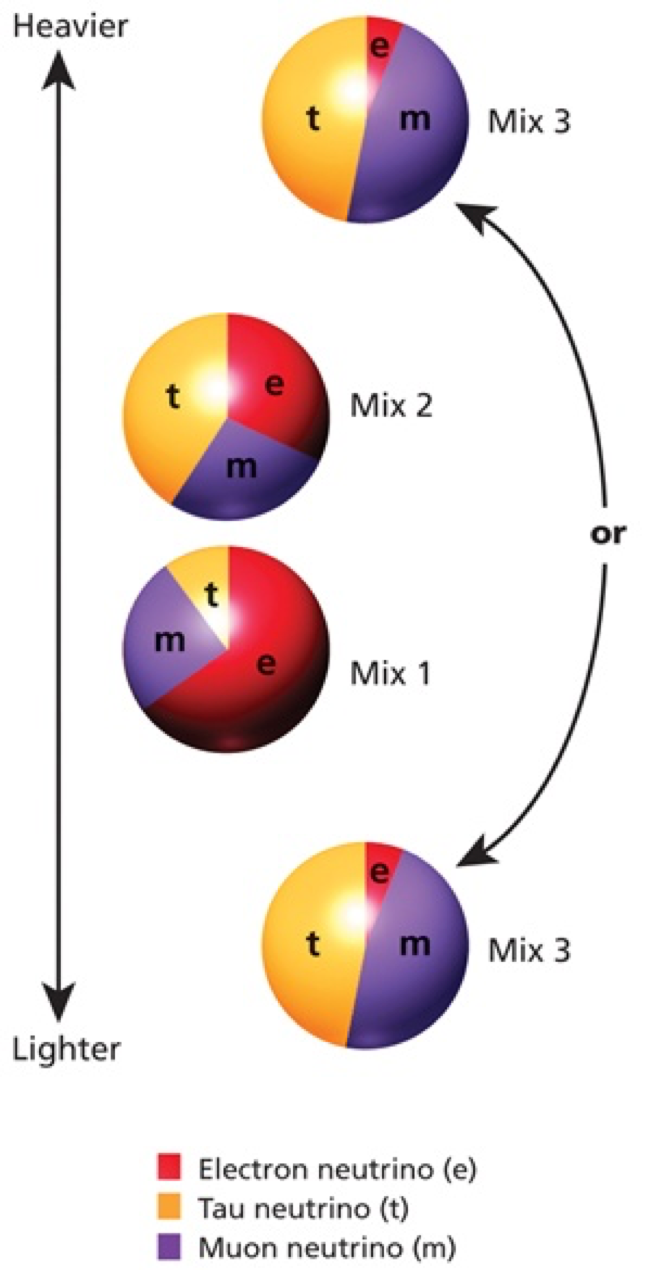Neutrinos are light elementary particles that have no charge and interact weakly with matter. Neutrinos can be observed as three flavors: electron, muon and tau. The observable flavor eigenstates are each a mixture of three mass eigenstates. The three Mass eigenstates have definite mass and are each a mixture of the three flavor eigenstates. When a neutrino's flavor and mass eigenstates are not aligned, the neutrino's flavor will "oscillate."
A solar neutrino is emitted at the center of the Sun as an electron neutrino. When it reaches the outside of the Sun, it is 90% probable that it is in its heavy mass eigenstate nu_2. It propagates through the vacuum of space as a nu_2 until it reaches the Earth. We are particularly interested in detecting the neutrino after it passes through the Earth in its electron flavor eigenstate, as that is the state in which it interacts with electrons in matter.


